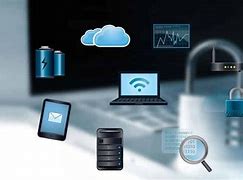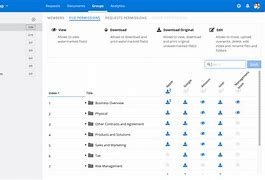

Virtual data rooms (VDRs) have become an indispensable tool for businesses of all sizes, but their benefits extend far beyond the corporate world. Nonprofits, with their sensitive donor information, can also reap significant advantages from using VDRs. A VDR acts as a secure digital repository where sensitive documents can be stored and shared with authorized individuals only. For nonprofits, this means safeguarding the privacy of their donors, ensuring the security of financial data, & enhancing transparency in their operations.
With VDRs, nonprofits can easily & securely share donor data with their teams & external partners while adhering to privacy regulations such as the General Data Protection Regulation (GDPR). By using VDRs, nonprofits can eliminate the risk of data breaches & security threats, boosting donor confidence and maintaining their reputation. Furthermore, VDRs simplify document management, eliminating the need for manual file-sharing and physical storage. This saves nonprofits time, money, & ensures efficient communication, leading to greater fundraising success.
With all of these benefits, VDRs are a valuable tool for nonprofits that want to keep their donors’ data safe & maintain a transparent & efficient organization.
Virtual Data Rooms for Nonprofits: Safeguarding Donor Information
In today’s digital age, nonprofits face the critical challenge of protecting sensitive donor information while upholding transparency and accountability. This is where Virtual Data Rooms (VDRs) emerge as a powerful solution, offering a secure and efficient platform for managing sensitive data.
What are Virtual Data Rooms?
meaning of Virtual Data Rooms:
A Virtual Data Room is a secure online platform designed to store, manage, and share sensitive documents and information. It acts as a centralized repository, offering controlled access to authorized individuals.
How Virtual Data Rooms Work:
VDRs utilize advanced security attributes, including encryption, access control, and audit trails, to ensure data integrity and prevent unauthorized access. Users can upload, organize, and share documents securely, enabling efficient collaboration and communication.
Why are Virtual Data Rooms crucial for Nonprofits?
Protecting Sensitive Donor Information:
Nonprofits handle a wealth of sensitive donor information, including financial details, personal data, and donation history. VDRs offer a secure environment to safeguard this information, minimizing the risk of data breaches and protecting donor privacy.
Complying with Regulations:
Nonprofits must comply with various regulations concerning data privacy and security, such as the General Data Protection Regulation (GDPR) and the California Consumer Privacy Act (CCPA). VDRs offer attributes that aid in meeting these regulatory requirements, ensuring compliance and mitigating legal risks.
Enhancing Transparency and Accountability:
VDRs promote transparency and accountability by providing a clear audit trail of all actions taken within the platform. This allows for easy tracking of document access, edits, and sharing, fostering trust and confidence among donors and stakeholders.
Streamlining Fundraising and Grant Applications:
VDRs streamline fundraising and grant application processes by providing a secure and organized platform for sharing proposals, financial reports, and other pertinent documents. This facilitates efficient communication and collaboration with potential funders.
What are the benefits of Using Virtual Data Rooms for Nonprofits?
Enhanced Security:
- Secure Access Control: VDRs allow nonprofits to set granular access permissions, granting specific users access to specific documents or folders. This ensures that only authorized individuals can view and interact with sensitive data.
- Data Encryption and Secure Storage: Data stored within a VDR is typically encrypted both in transit and at rest, protecting it from unauthorized access even if the platform is compromised. VDRs often offer robust security attributes like multi-factor authentication and secure login protocols, enhancing the overall security posture.
- Audit Logs and Activity Tracking: VDRs record every action taken within the platform, providing a thorough audit trail. This allows nonprofits to track user activity, determine potential security breaches, and demonstrate compliance with data privacy regulations.
Improved Efficiency:
- Centralized Data Repository: VDRs serve as a single source of truth for all sensitive documents, eliminating the need for multiple storage locations and facilitating efficient data management.
- Streamlined Collaboration and Communication: VDRs offer real-time collaboration attributes, allowing users to share documents, leave comments, and track progress on projects. This streamlined communication reduces potential delays and promotes efficient teamwork.
- Reduced Risk of Errors and Delays: The centralized and secure nature of VDRs minimizes the risk of lost or misplaced documents, reducing the likelihood of errors and delays in critical processes.
Cost Savings:
- Eliminate the need for physical storage and printing: VDRs eliminate the need for physical storage space, saving on rental costs and reducing paper waste.
- Reduce travel and meeting expenses: VDRs facilitate secure document sharing and virtual collaboration, reducing the need for in-person meetings and travel expenses.
boostd Transparency and Accountability:
- Easy access to information for stakeholders: VDRs offer stakeholders with secure access to pertinent information, fostering transparency and trust.
- Clear audit trails for all actions taken: The detailed audit trails generated by VDRs ensure accountability and offer a clear record of all activities within the platform.
- Improved trust and confidence in the organization: By demonstrating a commitment to data security and transparency, nonprofits can enhance trust and confidence among donors, stakeholders, and the public.
How to select the Right Virtual Data Room for Your Nonprofit
Consider Your Needs:
- How much data do you need to store?
- How many users need access?
- What level of security is required?
attributes to Look for:
- Secure access control: Ensure the VDR offers granular access permissions, two-factor authentication, and function-based access control.
- Data encryption and secure storage: Confirm that the VDR utilizes advanced encryption techniques for both data in transit and at rest.
- Audit trails and activity logs: Look for detailed audit trails that capture all user activities and offer a complete record of access.
- Collaboration tools: Consider attributes like document sharing, commenting, and version control to facilitate efficient teamwork.
- Mobile access: Ensure the VDR offers a mobile app for convenient access on smartphones and tablets.
Pricing:
- Compare pricing options: Explore varied pricing plans and select a solution that fits your budget.
optimal Practices for Using Virtual Data Rooms for Nonprofits
Implement Strong Access Control:
- Grant access to only authorized individuals: Assign access permissions based on job functions and responsibilities.
- Use two-factor authentication: Add an extra layer of security to user accounts.
- Limit access based on functions and responsibilities: Assign specific access levels to varied functions within the organization.
Regularly Update Security Measures:
- Patch vulnerabilities promptly: Ensure the VDR software is regularly updated to address security vulnerabilities.
- Use strong passwords and change them regularly: Encourage staff to use complex passwords and change them frequently.
- Train staff on security optimal practices: offer regular training to staff on data security protocols and optimal practices.
Keep Records of All Access and Activities:
- Monitor access logs and audit trails: Regularly review access logs and audit trails to determine any suspicious activities.
- Document any suspicious activity: Record any unusual access patterns or suspicious activity for future reference.
- Conduct regular security audits: Perform periodic security audits to assess the efficacy of security measures and determine potential vulnerabilities.
Conclusion:
Virtual Data Rooms are an invaluable tool for nonprofits to safeguard donor information, comply with regulations, and build trust with stakeholders. By implementing optimal practices and choosing the right VDR solution, nonprofits can achieve enhanced security, improved efficiency, and boostd transparency. It’s time to prioritize the safety of your donor data and embrace the future of secure data management with Virtual Data Rooms.









